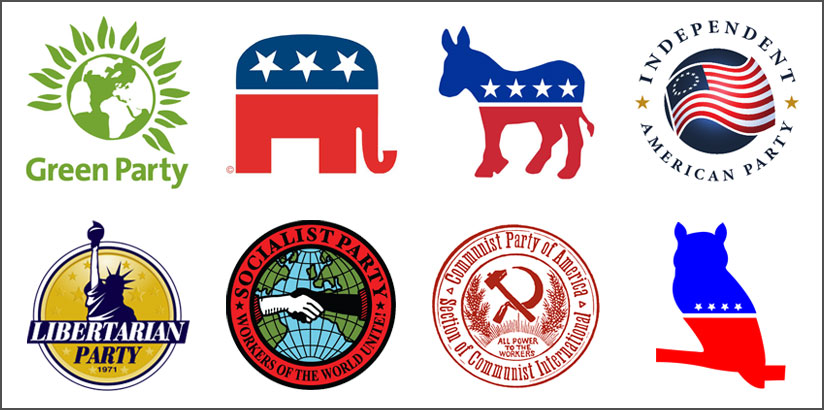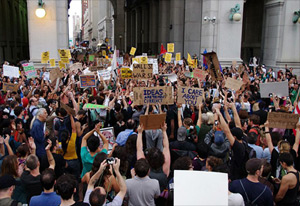Social Studies

Elections are a part of our American culture. We elect a President of the United States every four years. We also elect Senators, Representatives, Governors, Mayors, and many other officials. These officials all represent a specific political party. Once elected, they hold positions of authority and have an impact on public policy. Should the speed limit be 55 miles an hour? Should we have military action in a foreign country? Should entitlement benefits such as Medicare, Social Security, and Unemployment be changed due to population and economic conditions? Elected officials contemplate questions like the examples above, and each political party has an ideology about how the questions should be answered.

On September 17, 2011, the United States saw a movement called Occupy begin in New York City. The Occupy Movement was a global phenomenon fueled by the ability to network through social media. In the United States, the protest centered around a theme of "We are the 99%". This was a political slogan that was used by the protestors. The slogan reflects the frustration of the American people about the concentration of wealth among 1% of Americans. The goal in the protests was to draw attention to the following:
- The income of the top 1% of Americans grew by 275% between 1979 and 2007.
- For the middle class Americans, only 60% saw their income increase by 40% during that time difference.
- In 2007, the wealthiest Americans in the 1% owned 45% of the countries' total wealth.
The Great Recession widened the income gap between the 99% and the 1%. The Occupy Wall Street was a protest movement that impacted the economic policies being voted on in Congress. As you review the content in this lesson, you may have the following questions:
- Are there any similarities or differences between the political parties leading the United States of America?
- How do interest groups and lobbyists impact contemporary public policy?
Key Terms
- Caucus - A meeting of members of a political party in order to determine a candidate or decide on a policy.
- Conservative - A person who holds to tradition and is cautious about change.
- Democratic Party - One of the two main political parties that promotes a strong central government and social programs.
- Green Party - A political party focusing on the environment.
- Ideology -The ideas and manner of thinking of a group, political party, or individual.
- Interest Groups - A group of people whose members have common goals.
- Liberal - A person open to new ideas.
- Libertarian Party - A political party that views society with limited government.
- Lobbyist - A person who is employed to persuade (lobby) congress to support their agenda.
- Moderate - A person with an average ideology between a conservative and a liberal.
- Political Parties - Organizations with the goal of obtaining political power.
- Republicican Party - One of the two main political parties that promotes a limited central government, conservative ideology, and a strong national defense.
Sample Question
By studying the content covered in this lesson, you will be able to determine different political views and how the people that hold the beliefs come together to make current political policy. Match the following statements to the political party.
Complete the statements below by selecting either Democratic Party or Republican Party in the box.
The favors raising minimum wage and higher tax rates for higher income brackets.


